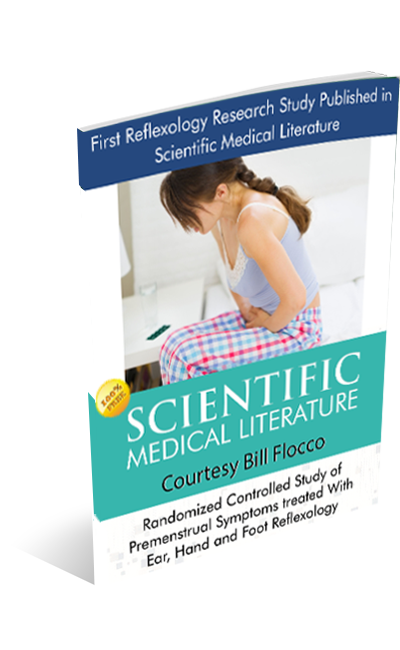First 10 Of 70 Fascinating Facts about Feet
BONES IN THE FEET
- A quarter of all the bones in your body are found in your two feet.
- The normal foot has 26 bones providing structural support, 28 bones when you include the 2 large sesamoid bones.
- There are extra small bones called sesamoid bones located in the tendons of each foot, near joints.
- Two larger sesamoid bones are imbedded in each foot, close to the base of the big toe.
- An additional 14 to 26 smaller sesamoid bones can be found in various other parts of each foot.
- The foot bones are composed of three sections: the toes, phalanges; the long bones in the middle, called metatarsals; and the third section, known as the ankle bones, are called tarsals.
- There are 14 phalanges in the toes.
- The big toe is also called the Great Toe and the Hallux
- The big toe has two bones.
- Each of the other four toes has 3 bones (phalanges); the distal phalanges (distal meaning further away from the body); the middle, a.k.a. medial phalanges; and the proximal phalanges (proximal meaning closest to the body.
- There are 5 long bones, metatarsals, in each foot
- Of the 7 anklebones (tarsals), the talus and the calcaneus form the major part of the heel.
- The tibia (the largest bone in the lower leg) sits on the Talus.
- The calcaneus bone is what most people call the heel bone
- Each foot has 33 joints, 31 tendons, 19 muscles, and 107 ligaments.
- What’s the difference between a tendon & a ligament? Both are fibrous tissues. Primarily, tendons attach muscles to bones, and ligaments are the tough tissue that holds bone to bone and stabilizes joints. Both are needed for joint strength & flexibility.
- The thickest skin in the human body is located in the feet
- Most people have one foot larger than the other; it’s rare for both feet to be exactly the same length.
- The bottom of the foot, the part that touches the ground or floor when you walk, is called the Plantar surface
- The top of the foot is called the Dorsal Surface
- The outer edge of the foot is called the Lateral Surface
- The inner edge of the foot, is called the Medial Surface
- Toenails are, structurally, modified hairs made of a tough protective protein.
- The rate at which nails grow depends on several factors: like age, sex, diet, and exercise; it is known that fingernails grow faster than toenails.
- Toenails grow faster in hot weather,
- Toenails also grow more rapidly during pregnancy, and in children before puberty.
- To grow an entirely new toenail requires at least five to six months.
- There are more sweat glands per square inch in the soles of your feet than any other part of your body.
- Approximately 250,000 sweat glands in your feet, combined, can release about 8 ounces (one cup) of moisture each day.
- Bacteria in the sweat, not the sweat itself, cause most of the smell in smelly feet.
- Alternating the shoes you wear every other day is helpful in reducing the sweaty foot odor.
- Some babies are born with webbed toes, considered a genetic defect often inherited.
- Normally, the child’s foot grows most rapidly before the teen years.
- Children’s feet reach about 90 % of their adult length by 12 years-of-age.
- Babies’ feet are flat and chubby because they are born with a pad of fat where an arch would normally be in an adult’s foot.
- A child is usually about 2 ½ years old before arches begin to show up.
- A misaligned spine, lower backache, headaches, indigestion, and other health issues can be traced to problems with your feet.
- Plantar warts, blisters, athlete’s foot, poor circulation, cold feet, ingrown toenails, and bunions are some of the common foot problems.
- Corns & calluses are the most common foot problems.
- Having extra toes is technically known as polydactyly, or polydactylism.
- About 1-2 of every 1000 children born are reported to have an extra toe.
- Peripheral Vascular Disease of the arteries of the feet and legs can lead to pain on walking, ulceration, infection, and in severe cases—gangrene and possible amputation. Its primary cause is cigarette smoking.
- Neuropathy, disease or dysfunction of peripheral nerves in the feet and legs, typically causes numbness or weakness.
- Reflexologists, by being on the lookout for any of these symptoms, can help doctors arrive at an early diagnosis and treatment for either of the above conditions.
- Going barefoot, especially on wet grass, soil, or sand, known as “earthing,” is excellent for your feet, joints, and other health benefits. Some studies have indicated these health benefits come from our bodies’ drawing electrons from the earth.
- It’s difficult to concentrate on anything when you’re in pain, but especially when it’s your feet that hurt.
- Not wearing the correct shoe size is a common mistake many people make.
- Ill-fitting shoes are one of the main causes of foot pain
- Many people wear shoes that are one to two sizes too small because they buy the size they wore when they were younger, perhaps unaware that feet change size throughout adulthood.
- Haven’t you heard, it is wise to do shoe shopping in the afternoon? The reason for this is that feet have a tendency to swell during the day.
- Every time you purchase shoes, you should have your feet measured . . . while standing.
- Why is standing still more tiring than walking? Walking helps circulate the blood. It’s the increased difficulty in circulation when you are standing that causes exhausted feet.
- Although it is not “normal” for your feet to hurt – foot muscles tend to become uncomfortable when not enough fresh blood reaches them.
- If you wear shoes with 2 ½ inch heels, the pressure on the ball and pad of you feet increases by 75%. Imagine how much greater that pressure is in 3 or 4 inch heels?
- Women experience about four times more foot problems than men—most likely attributed to wearing high heeled and pointed toed shoes.
- Gait . . . a person’s manner of walking . . . normally occurs without the whole foot ever flat on the ground.
- Gait is usually different for both your left and right feet.
- In a healthy gait, the foot’s first point of contact is the heel, then the outside border of the foot (a.k.a. the lateral arch), then the ball of your foot, and finally the big toe.
- Irregularities in the gait, can contribute to health problems elsewhere in the body.
- Irregularities in the alignment of the toes of the foot can also lead to health problems elsewhere in the body.
- When walking, each time your heel lifts off the ground, your toes are forced to carry about one half of your body weight.
- While walking, the pressure on parts of your feet can vary enough to exceed your body weight.
- Walking is the best exercise for your feet as well as your general health, as it improves circulation and promotes a state of well-being.
- Number of miles women walk per day = 10
- Number of miles men walk per day = 7
- Thus, women walk 3 miles more than men each day.
- By the time the average person is 70-years-old, he/she will have walked the equivalent of three to four times around the earth.
- There are schools of thought suggesting that many foot problems and resulting health issues throughout the body, can be corrected or at least dramatically improved by properly and methodically working with the soft tissues of the feet in unique ways.
- Entire professions are devoted to feet: Foot Reflexologist, Podiatrist, Podopaediatrics, Foot Hygienist, Podiatric Nurse, Pedorthist, Reflexognosist, Pedicurist, and of those biomechanical specialists who work for companies that make shoes for people with special needs.
- The better you take care of your feet, the better health and quality of life you will be able to enjoy throughout your entire lifetime.
Second 10 Of 70 Fascinating Facts about Feet
Third 10 Of 70 Fascinating Facts about Feet
NAILS
SWEAT GLANDS
Fourth 10 Of 70 Fascinating Facts about Feet
GROWTH OF THE FEET FROM INFANCY
HEALTH PROBLEMS AFFECTING THE FEET OR TRACED TO THE FEET
Fifth 10 Of 70 Fascinating Facts about Feet
IMPORTANCE OF CORRECTLY FITTING SHOES
Sixth 10 Of 70 Fascinating Facts about Feet
GAITS & WALKING & RUNNING
















